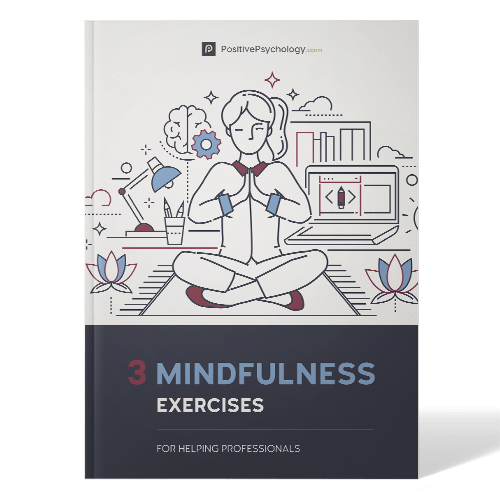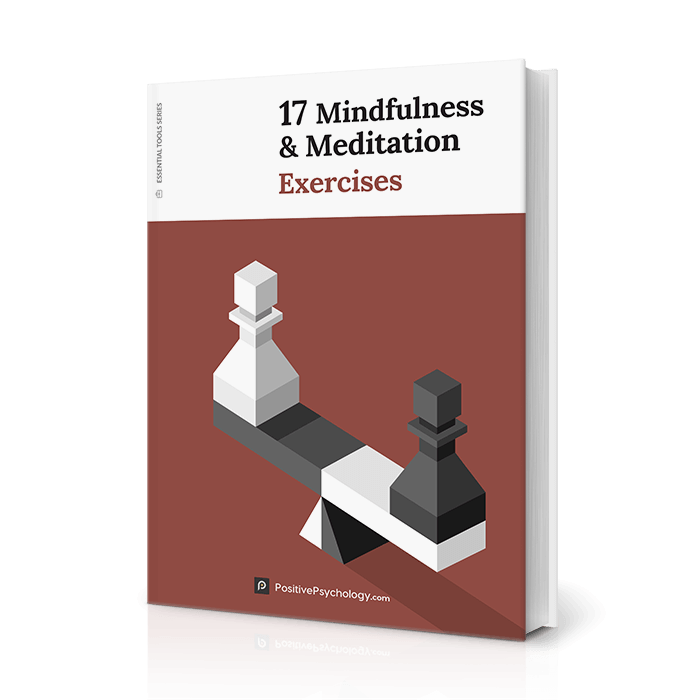28 Best Meditation Techniques for Beginners to Learn
 There are many different kinds of meditation techniques and they can all be beneficial.
There are many different kinds of meditation techniques and they can all be beneficial.
The beauty of meditation is that it can be done anywhere and at anytime.
Most meditation techniques are relatively simple, ranging from simple breathing meditations to more complex meditations.
Meditation is a very personal practice because what is relaxing for one person may be distracting for another. Some people find it quite difficult to turn the mind off so guided meditations are a wonderful option as well because they allow your mind to go on an incredible journey.
In this article, we will cover the basics of meditation from common meditation techniques to mindfulness techniques to help calm anger.
Meditation is a pleasing way to relieve stress and anxiety. If you have never tried meditating, it may be a little intimidating at first.
A beautiful meditation can transform you to another time and another place. A simple meditation practice can also help you shed painful emotional burdens and negative thoughts.
Meditation can help melt away the layers of stress and anxiety that build up over time. Those that engage in a regular meditation program can better manage stress and tension, ward off depression and even lower their blood pressure.
Meditation can help you cope better with life and help you get rid of the tensions of the day. A lot of benefits for such a simple practice.
Before you continue, we thought you might like to download our three Mindfulness Exercises for free. These science-based, comprehensive exercises will not only help you cultivate a sense of inner peace throughout your daily life, but will also give you the tools to enhance the mindfulness of your clients, students, or employees.
This Article Contains:
- 10 of the Most Common Meditation Techniques
- What Techniques are Ideal for Beginners?
- The Transcendental Meditation Technique
- Zen Meditation Explained
- Guided Meditation
- 4 Simple Visualization Techniques
- What Technique is Proven to Relieve Stress and Anxiety?
- Is There a Recommended Technique for Depression?
- Which Technique is Best For Anger Issues?
- 5 Quick Meditation Techniques to Utilize Today
- A Take-Home Message
- References
10 of the Most Common Meditation Techniques
The purpose of meditation is to relax the mind and the body; it is not a complicated process but there are some simple steps you can follow to get started. If meditation has been challenging for you, then perhaps you have been trying too hard.
There are many techniques you can use to get started. Meditation is the opposite of what most of us engage in throughout the day so it can be difficult to learn how to turn off your mind if this is something you are not used to doing.
Ten of the most common meditation techniques include:
- Breathing Meditations
- Mindfulness Meditations
- Focus Meditations
- Movement Meditation or Walking Meditations
- Mantra Meditations
- Buddhist Meditations such as Loving Kindness
- Christian Meditation or Spiritual Meditations
- Guided Meditations
- Transcendental Meditations
- Progressive Relaxation Meditations
This is by no means a comprehensive list, but simply a list of the most common types of techniques. Not all of the techniques are meant for everyone. For example, you might find the Transcendental Meditation practice too complicated and be drawn to a simpler practice like a walking meditation.
These practices each require different skills and mindsets, so only you will know what is right for you.
What Techniques are Ideal for Beginners?
There are several techniques suitable for beginners. A few of these include (Bertone, 2019):
- Breathing Meditations
- Mindfulness Meditations
- Focus Meditations
- Walking Meditations
- Progressive Muscle Relaxation Meditations
- Mantra Meditations
1. Breathing Meditations
According to Science Daily, meditation and breathing exercises can make the mind sharper. New research reveals that there is a link between breath-focused meditation and attention and brain health (Trinity College Dublin, 2018).
A simple breath-focused meditation has several cognitive benefits from an increased ability to focus, less of a wandering mind, improved arousal levels, more positive emotions, less emotional reactivity, and many other benefits.
The mindfulness of breathing practice involves using the breath as an object of focus. It’s a great technique that anyone can do.
Breathing practices allow you to focus on the moment and focus on the breath because each moment you spend focusing on something positive is one less moment you spend focusing on something negative.
Many people breath shallower during times of stress, so learning how to breathe deeply can help you feel more peaceful and calm throughout the day.
Breathing deeply is also a great way to shift your focus when you are feeling anxious. The 4-7-8 breathing technique is a great technique to learn because it acts like your body’s natural tranquilizer.
Dr. Andrew Weil’s 4-7-8 Breathing Technique (Fletcher, 2019).
Begin by emptying your lungs.
- Breathe in through your nose for 4 seconds.
- Hold your breath for 7 seconds.
- Exhale firmly through your mouth, pursing the lips, for 8 seconds
- You may repeat this breathing cycle up to 4 times.
This type of simple technique is rejuvenating for the nervous system. If it makes you feel a little dizzy, don’t do any more than 3-4 breaths at first. This kind of breathing acts as a natural tranquilizer.
Practicing this kind of simple breathing practice can completely shift your focus and your state of mind.
2. Mindfulness Meditations
Mindfulness meditation is all about being present in the here and now and not getting distracted by thoughts about the past or stressing about the future.
According to the Mayo Clinic (2020), mindfulness is a type of meditation where you focus on being intensely aware of what you are sensing or feeling moment by moment without judging or trying to interpret.
Practicing mindfulness might include mindful breathing, guided imagery, or even something like a body scan meditation where you tune into your body.
Mindfulness means doing something with 100% of your attention and focus, so you could also practice mindfulness while washing the dishes or taking a shower.
In typical mindfulness meditation, you might take the time to breathe deeply or even scan your body, working your way up from your toes to the top of your head.
Essentially, anything you do with all of your focus and attention could be considered a form of mindfulness.
3. Focus Meditations
A focus meditation involves focusing on an object like a flower or a candle and taking the time to examine it to the fullest extent.
You can select anything that stimulates your senses. For example, if you chose a yellow rose, you could sit and stare at the rose and imagine yourself touching it and feeling its velvety texture. You could also pay attention to any lines or creases in the rose or immerse yourself in the color yellow.
A focus meditation is all about zeroing in on the details of something so much so that you don’t see anything else.
You can start by choosing an item of focus like a candle and sit comfortably in front of it. As you breathe in and out, notice how the flame flickers or how the flame is made of several different colors. Focus on the smells, the sounds, and experience what it’s like to immerse yourself in the candle.
This kind of practice helps you deepen your focus while you hold your attention. You might be surprised at how effective a meditation like this can be.
4. Mindful Walking Meditations
Walking meditation is derived from Zen Buddhism and it is also known as kinhin, a practice in which practitioners walk around the room while holding their hands in shashu: holding one hand closed in a fist behind the back and the other hand closed within the fist.
During the walking meditation, steps are taken after each full breath. The beginning of kinhin is announced by the ringing of a bell twice.
There are many modern variations to walking meditation and walking meditations can be very rewarding and relaxing. The idea behind a walking meditation is to walk in silence as you observe everything that is going on all around you.
For example, you could notice the leaves on the trees if you are outside, feel the warmth of the sun or pay attention to the sound your feet make as they hit the pavement or surface.
For people who have trouble sitting still for a regular meditation practice, walking meditation can be very healing.
There is a very nice mindful walking article in the positive psychology blog for those who would like to explore this more.
5. Progressive Muscle Relaxation Meditation
Progressive Muscle Relaxation is a very classic type of meditation, which basically involves the tightening and loosening of various muscles up and down the body.
You could do a progressive muscle relaxation by squeezing and releasing the large muscles of the body, either starting at the top of the head or the bottoms of the feet.
This type of meditation can be very soothing and relaxing especially before bedtime and it’s a simple practice that even children can do.
6. Mantra Meditation
A mantra is a sacred sound that is used to override linguistic thought.
In Sanskrit, the word mantra is a combination of two words- manas meaning mind and tra meaning tool- literally a mind tool, or rather tool for training the mind.
Mantras are yogic devices based on sacred sounds that evoke specific psychological states. The mental or verbal recitation of the mantra is used to enhance focused awareness and eliminate linguistic thought.
Mantra meditation involve the repetition of a sacred sound, known as a mantra, to gain focus or clarity.
The mantra can be chanted aloud or repeated silently. Many cultures utilize mantras but the Buddhist faith may be the most well known. Chanting is an age-old practice that has been used for millennia.
A few commonly known mantras are Ohm and Aham Prema, which means divine love.
Typically a mantra is repeated for a cycle of 40 days but it’s certainly not necessary for a beginning practitioner.
If you want to practice mantra meditation, simply sit quietly and ground and center yourself as you repeat your mantra 108 times. You can also count on a prayer bead or a mala.
Beginner’s guide to meditation – Pick Up Limes
The Transcendental Meditation Technique
Transcendental meditation is used to integrate conscious being and attain inner peace, joy and bliss. This type of meditation has been described as a kind of fourth state of awareness with the first three being the waking state, the dreaming state and the state of deep dreamless sleep.
A Sanskrit mantra is communicated by a trained teacher specific to the individual student. The mantra is recited mentally to attune the meditator’s consciousness to vibrations that promote psychological integration.
Transcendental meditation is a very specific type of meditation introduced by Maharishi Mahesh Yogi, a spiritual guru.
Zen Meditation Explained
Zen is a school of Buddhism known as Mahayana Buddhism and it originated in China in the 6th century. Zen meditation is derived from the term Zazen.
Zazen aims to empty the mind of distracting thoughts, feelings and sensations to maintain a state of choiceless awareness that consist of an evenly attuned, thought-free attention to gain insight into the empty nature of existence.
There are two schools of Zen: Soto and Rinzai.
The Soto school practice sitting and observing. Free of clinging–watching thoughts, feelings, and sensation arise and dissolve spontaneously.
The Rinzai school use koans during sitting practice, which are unsolvable riddles that accelerate the emptying of the mind, drawing it back to its original source or natural empty state.
Zen temples or monasteries are used for meditation and practitioners most likely sit as a group on a cushion or mat, bowing before taking their seat and after rising.
The practice of zazen is typically taught in one of three ways: concentration, introspection and the art of merely sitting. Concentration occurs when one is focused on the breath.
Introspection occurs when participants focus their consciousness on an object of meditation. This type of simple practice is meant to help people remain focused on the present moment observing thoughts by watching them pass through the mind.
Guided Meditation
There are hundreds if not thousands of guided meditation techniques and this type of practice can be very rewarding.
Guided meditations involve the usage of imagery and visualizations and they can be very helpful for those who find typical meditation techniques challenging.
Guided meditations can take you places you can only imagine and they can even be used for personal development issues and healing. Very similar to hypnotherapy, guided meditations are extremely beneficial and useful.
You can practice a simple guided meditation by sitting quietly and imagining yourself walking along the beach or by listening to a free recording on YouTube.
4 Simple Visualization Techniques

You can use the art of visualization to see yourself living a new life. By focusing on what you want, rather than what you don’t want, you draw things to you.
You may find it easier to visualize with your eyes closed. Start by visualizing a simple scene or picture in your mind, and work up to bigger things. One great exercise to practice is the beach visualization.
1. Walking Along the Beach
Walking along the beach is something anyone can imagine. Try using all of your senses when you visualize by seeing, hearing and touching things.
For example, as you walk you could admire the beautiful colors in the sky or the bright blue color of the water. You could also reach down and touch the sand and notice the texture or the feel of it.
Listening to the sounds of the sea is also very soothing. As you walk notice the sound of the water splashing against the shore or even the sound of seagulls chirping. The more you immerse yourself in this type of relaxing scene the better you will feel.
2. Wooded Trail
This type of visualization can also be very relaxing. Simply imagine yourself walking in the forest or along some kind of wooded trail. Smell the aroma of the trees and leaves and touch the bark. Notice the crunching sound of your feet as you walk.
Immerse yourself in the environment and sit down on a log and see what you sense or feel.
3. Campfire Visualization
The campfire visualization is a great way to release stress and anxiety. Imagine yourself sitting by a campfire and immerse yourself in the color of the flames and the warmth of the environment. Notice what is around you and take the time to sit and reflect.
4. The Clean Room Visualization
Sitting in a clean organized space can also be very healing. Sometimes the clutter in our lives acts as a distraction. Imagine yourself sitting in a clean, restful space and notice how that makes you feel.
You might scatter some candles around the room, a few pillows or other small items to make the space more relaxing. Play with your environment until you feel it is perfect for you and spend some time here, meditating and reflecting.
What Technique is Proven to Relieve Stress and Anxiety?
According to Harvard Medical School, mindfulness meditation may ease anxiety and mental stress.
Researchers at John Hopkins University examined over 19,000 studies, 47 of which helped ease psychological stress like anxiety (Corliss, 2019).
A study done by Dr. Elizabeth Hoge, a psychiatrist at the Center for Anxiety and Traumatic Stress Disorders at the Massachusetts General Hospital, also found that mindful meditation helped people quell anxiety symptoms for those with generalized anxiety disorder (Corliss, 2019).
One technique that is beneficial for stress and anxiety is relaxed breathing. This technique involves deep breathing done at an even pace, breathing all the way down into the diaphragm. The overall goal of the practice is to slow your breathing down and take in more oxygen as you reduce the usage of your muscles and breathe more efficiently.
Is There a Recommended Technique for Depression?
Another study done at Harvard found that mindful meditation may even change the brain in depressed patients.
An eight-week course in mindfulness-based cognitive therapy resulted in patients being able to disengage from negative thoughts much more quickly.
Brain scans also revealed that the changes in brain activity for those who learned to meditate held steady even when they weren’t actively meditating (Powell, 2018).
Which Technique is Best For Anger Issues?
A study published by Fennell, Benau, and Atchley (2016) revealed that a single meditation session can reduce physiological indices of anger in both novice and experienced meditators.
The research examined 15 people who were new to meditation and 12 who were experienced meditators. The study measured their physical responses like blood pressure, rate of breathing and heart rate.
After only 20 minutes of meditation, those who were new to the practice had a much calmer and more relaxed physical response when they were asked to think about the anger again.
Those who were more experienced meditators found that they didn’t have much of a response at all when asked to re-experience the anger.
5 Quick Meditation Techniques to Utilize Today
There are some quick techniques for those who don’t have a lot of extra time. Many of us find excuses or reasons for why we don’t have time to do something such as finding time for meditation.
These simple practices may be just what the doctor ordered if you fall into this category:
- Quick Body Scan
- Walking Meditation
- Shower Meditation
- Mindful Eating
- Chore Meditation
A body scan meditation combined with some deep breathing can be very healing and restorative. You can do this quick practice by breathing deeply and imagining a warm soothing light filling your body. As you imagine the light, you can also scan your body and mentally release any strain or tension.
A 5 or 10-minute walk can be very refreshing and exhilarating as well. The next time you feel stressed, try walking and paying attention to those physical sensations, such as the sound of your feet touching the pavement or the feel of the air on your skin.
You can also meditate in the shower by immersing yourself in the experience. For example, you can notice the lovely aroma of the soap, enjoy the sensation of the warm water or imagine your stress and tension draining away.
Mindful eating is a practice where you eat mindfully and put everything else aside. You can focus on the texture of the food, how it tastes going into your mouth or simply take the time to immerse yourself in the process of eating as a beautiful experience.
You can also meditate and reflect while doing chores like washing the dishes. Anything done with a single point of focus can be considered a meditation. Washing dishes can be a very soothing experience if you take the time to enjoy the process and the feel of the warm water.
A Take-Home Message
Engaging in daily meditation practice is an excellent way to manage stress. Many simple quick techniques can be used, even for those who have difficulty sitting still.
Taking a mindful walk, doing a lovely shower meditation or focusing on a beautiful object can be a very healing and restorative practice.
The truth is, it doesn’t take a lot of time to sit down and meditate and the health benefits alone are worth the extra effort.
We hope you enjoyed reading this article. Don’t forget to download our three Mindfulness Exercises for free.
- Bertone, H. J. (2019, October 1). 6 Types of meditation: Which one is right for you? Retrieved from https://www.healthline.com/health/mental-health/types-of-meditation
- Corliss, J. (2019, August 5). Mindfulness meditation may ease anxiety, mental stress. Retrieved from https://www.health.harvard.edu/blog/mindfulness-meditation-may-ease-anxiety-mental-stress-201401086967
- Fennell, A. B., Benau, E. M., & Atchley, R. A. (2016). A single session of meditation reduces of physiological indices of anger in both experienced and novice meditators. Consciousness and Cognition, 40, 54-66.
- Fletcher, J. (2019, February 12). How to use 4-7-8 breathing for anxiety. Retrieved from https://www.medicalnewstoday.com/articles/324417.php.
- Mayo Clinic. (2020, September 15). Mindfulness exercises. Retrieved from https://www.mayoclinic.org/healthy-lifestyle/consumer-health/in-depth/mindfulness-exercises/art-20046356.
- Powell, A. (2018, April 9). When science meets mindfulness. The Harvard Gazette. Retrieved from https://news.harvard.edu/gazette/story/2018/04/harvard-researchers-study-how-mindfulness-may-change-the-brain-in-depressed-patients/
- Trinity College Dublin. (2018, May 10). The Yogi masters were right — meditation and breathing exercises can sharpen your mind [Press release]. Retrieved from https://www.sciencedaily.com/releases/2018/05/180510101254.htm
Let us know your thoughts
Read other articles by their category
- Body & Brain (49)
- Coaching & Application (57)
- Compassion (26)
- Counseling (51)
- Emotional Intelligence (24)
- Gratitude (18)
- Grief & Bereavement (21)
- Happiness & SWB (40)
- Meaning & Values (26)
- Meditation (20)
- Mindfulness (45)
- Motivation & Goals (45)
- Optimism & Mindset (34)
- Positive CBT (28)
- Positive Communication (20)
- Positive Education (47)
- Positive Emotions (32)
- Positive Leadership (18)
- Positive Parenting (4)
- Positive Psychology (33)
- Positive Workplace (37)
- Productivity (17)
- Relationships (46)
- Resilience & Coping (36)
- Self Awareness (21)
- Self Esteem (38)
- Strengths & Virtues (32)
- Stress & Burnout Prevention (34)
- Theory & Books (46)
- Therapy Exercises (37)
- Types of Therapy (64)





What our readers think
This was a lovely article. Thank you.
Hello. I discovered your website through a comment that was posted on an entry in my journal. I’m rather new to meditation. I’m currently enrolled in a couple courses having to do with the subject, and am enjoying them. I thought meditation was only for people with mental-health issues. But it sounds like something I could definitely use. I will certainly continue to browse your site as time permits.
Lovely stuff.
A lovely, inspiring article. I could read it again and again.
That was a great story. Every note, I do note time meditation by focusing on the breath and remaining still for twenty minutes. I also do barefoot meditation walking at the fitness park on the concert.
Wonderful post! Loved the tips and going to use it. Check out this easy meditation technique too.
https://www.acousticpost.com/meditation-for-beginners/
Beautiful writing. I have tried meditation many times in my past. In my present, it is not working very well. I found the best form of meditation is to walk through the woods and let your mind roam free.
That’s a great post! I have been trying to meditate by focusing on one point but I am unsuccessful at that. I will definitely try your recommendations like walking on the beach to get ahead on my journey of meditation.